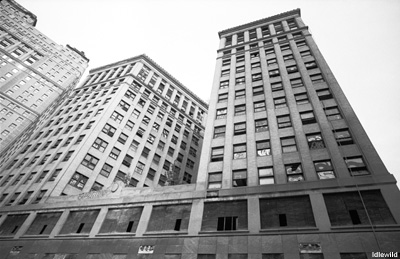
We've wandered halfway across the U.S. this past month to deliver our merry melodies, gloomy lyrics, aggressive noise and amusing chit-chat to young and old. Some places we revisit, like Madison, Wisconsin, are like pleasant old friends who throw an arm around us and press cups of hot cider into our grateful, chilly hands. Some towns, like Detroit, are like unstable, chain-smoking former roommates who behave unpredictably each time we reunite. They may suddenly explode with long-standing resentments, or they may surprise us with an insightful witticism. Detroit, indeed, is a place that even hardened New Yorkers approach with trepidation.
There was nothing unpleasant, however, about the crowd that greeted us at St. Andrews Hall this recent visit. The club has existed in Detroit's blighted center for as long as we've been touring, but the mood inside was warm and friendly. Our guitarist Dan Miller felt comfortable enough after the show to walk the half mile back to our hotel. Afterward, he was informed that he had miraculously cheated being stabbed to death.
I find myself drawn to the eerie specter of the abandoned, boarded up skyscrapers next to where we are staying. The giant ailanthus trees growing like weeds on their upper stories evoke a post-apocalyptic trope. Capturing the abject landscape requires a really wide 21mm lens screwed into an imitation Leica called the FED. This camera was produced in the former Soviet Union sometime during the grim years of the cold war. The FED was named in honor of Felix Edmundovitch Dzerzhinsky, who created the Soviet secret police. It is heavy and clunky. Amid the motor city's ruins I press the shutter and it produces a loud report that echos from the concrete and broken glass in all directions.

Next week: Things get even wider.